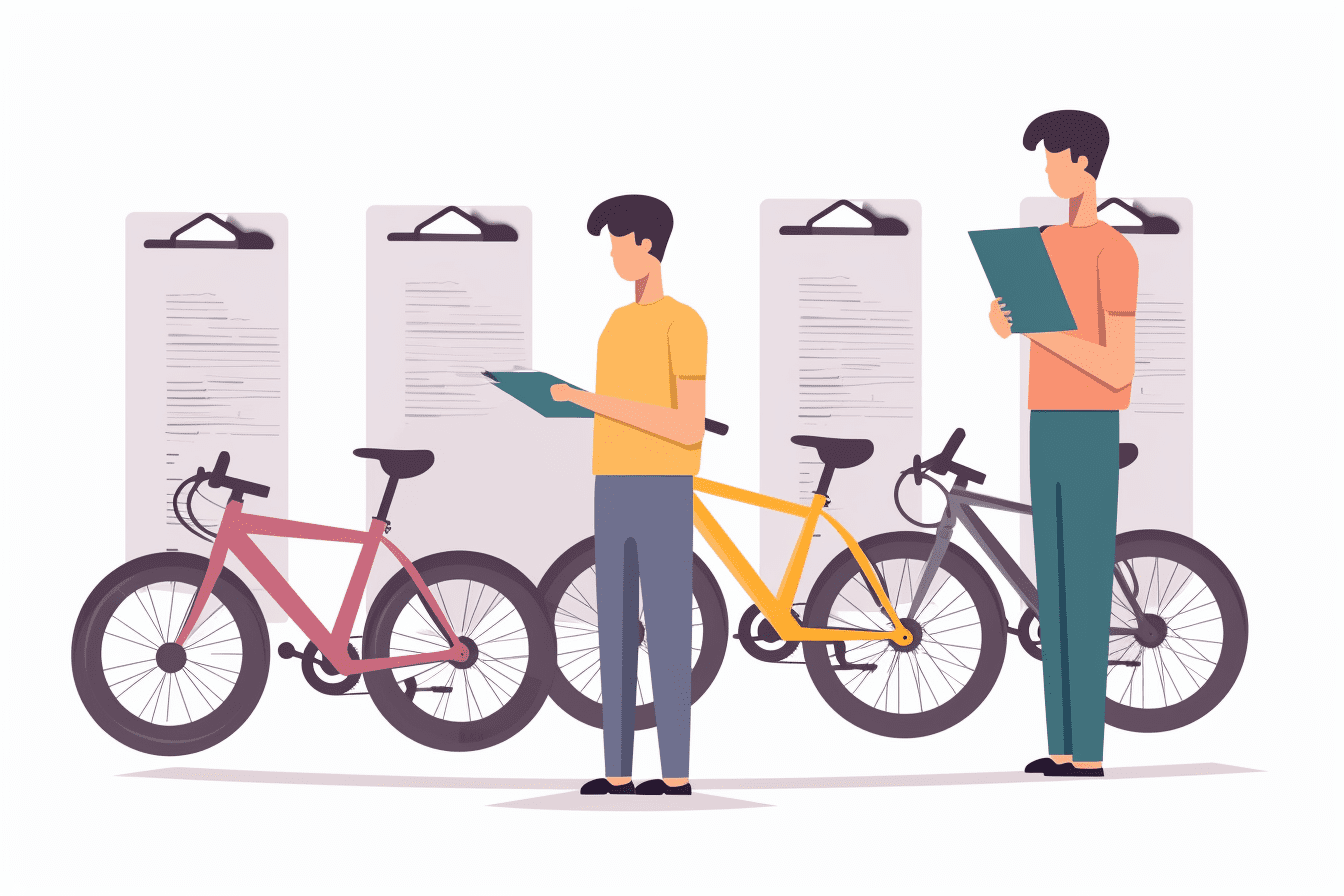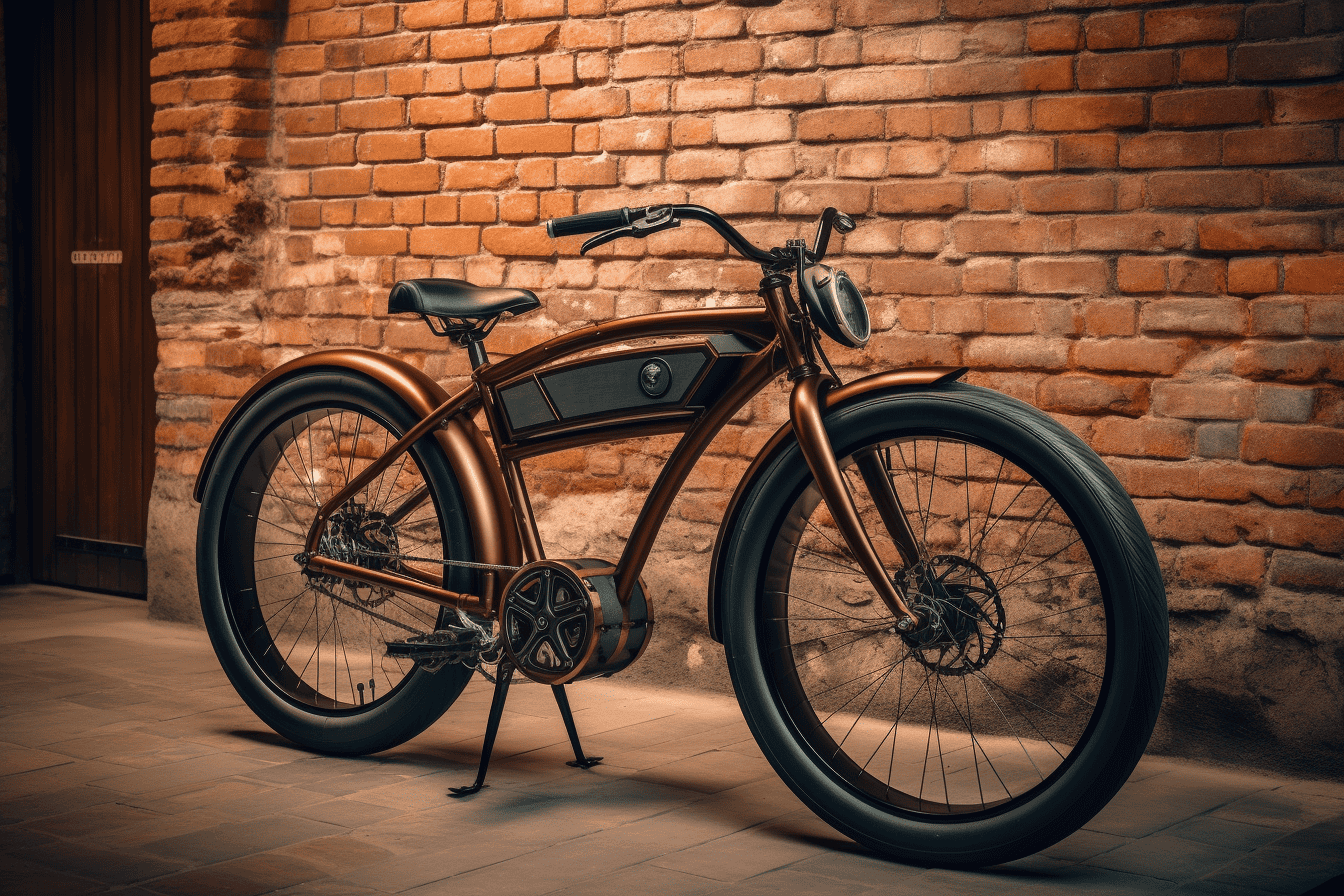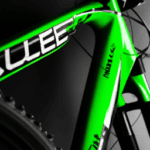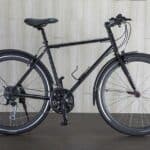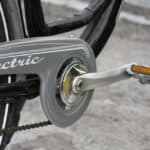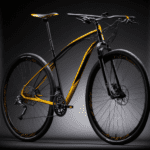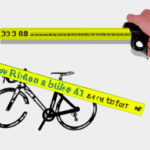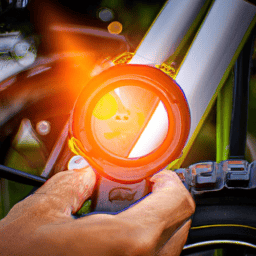Bikes offer a fantastic way to get around and stay fit. However, choosing the perfect one can be a challenge given the vast array of models, makes, designs, and sizes available.
As a bicycle expert I’m here to guide you through the process of selecting the right bike and brand that fits your needs.
First thing’s first: assess what type of biking you’ll be doing. Are you looking for something to commute to work with? Or do you want something more heavy duty for mountain biking?
Knowing what kind of cycling you’re interested in will help narrow down your choices when it comes to selecting the right bike. Once you know what type of riding you’ll be doing, start researching different brands and models that fit that criteria!
Types Of Bikes
Biking is a wonderful way to explore the world, get some exercise and just have fun. There’s no limit to the ways you can enjoy it, but first, you need to choose the perfect bike for your needs! Exploring all the various types of bikes out there can seem overwhelming, but don’t worry – with a few basics under your belt, you’ll be able to find the perfect ride in no time.
The most common types of bikes are:
- Road bikes are great for long rides on paved roads; they’re fast and comfortable, with narrow tires that make for a smooth ride.
- Mountain bikes are designed for off-road use; they have wide tires and rugged frames that can handle rocks and other obstacles.
- Hybrid bikes combine features from both road and mountain bikes, making them great all-arounders for everyday riding.
- Finally, electric bicycles make it easier than ever to get around town – they’re powered by a motor so you can go farther with less effort.
With so many options available, choosing the right type of bike doesn’t have to feel daunting. If you know what kind of riding you plan on doing most of the time, picking out a bike is easy!
That said, if you want maximum versatility from your ride – or just aren’t sure which type is best for your needs – then a hybrid bicycle might be just what you need.
Benefits Of Different Bike Types
When it comes to choosing the right bike, there are many factors to consider. One of the most important considerations is what type of bike you need. Bikes come in all shapes and sizes and are designed for different types of riders.
Mountain bikes, for example, are perfect for the more adventurous rider who wants to explore off-road trails. On the other hand, road bikes are great for long-distance commuters or recreational riders who want a smooth ride. Hybrid bikes combine elements from both mountain and road bikes, making them a great option for those who want to get a little bit of everything from their ride.
No matter what type of bike you choose, it’s important to understand how each bike is designed and how it will fit into your lifestyle. It’s also important to consider the terrain that you plan on riding on: if you plan on doing mostly flat surface or pavement riding, then a road or hybrid bike may be better suited than a mountain bike.
Ultimately, there’s no one-size-fits-all answer when it comes to finding the right bike for your needs – it’s up to you as the rider to determine which type best suits you and your lifestyle. When selecting your ideal bike, take some time to think about where you plan on riding and what type of rider you want to be – this can help narrow down your options and make sure that you end up with a bicycle that fits your needs.
With so many different types of bikes available today, there’s something out there that will meet everyone’s needs – all it takes is some research and careful consideration before selecting the right one for you! Transitioning now into identifying your riding style…
Identifying Your Riding Style
At first glance, it may seem like choosing the right bike and brand for your needs is an easy task. But in actuality, there’s much more to consider than just hopping on the closest two-wheeled ride and taking off! Identifying your riding style is the key to selecting a bike that fits your lifestyle and meets all of your cycling needs.
To start off, let’s take a look at some of the main types of bicycles available: mountain bikes, with their knobby tires and rugged frames; road bikes, with their skinny tires and lightweight frames; touring bikes, with their multiple gears and comfortable pedaling; commuter bikes, with their durable frames and smooth pedal rotation; electric bikes, which provide power assist when you need it.
Now that you know what type of bike best suits your riding style, let’s move on to other factors for choosing the right one.
Suspension is important if you plan on hitting rocky trails or going off-road.
The size of the bike is also critical – make sure it’s not too big or too small for you.
And lastly, if you plan on touring long distances over multiple days or weeks, make sure you choose a bike with enough gearing options so that you can comfortably pedal up those hills!
Factors For Choosing The Right Bike
Choosing the right bike for your needs can seem like a daunting task, but it doesn’t have to be. With some basic knowledge and guidance from an experienced bike shop or technician, you can find the perfect bike that fits your budget and lifestyle.
When buying a bike, there are several important factors to consider, including frame size and wheel size. Frame size is one of the most important considerations when selecting a bike. It’s important to find a frame that is comfortable for your body type and height. To get the best fit, it’s best to visit a local bike shop where you can be professionally fitted for your ideal frame size. Many shops also offer sizing charts online so you can determine the correct frame size on your own.
Once you’ve found the right frame size, it’s time to decide on wheel size. This will depend largely on what type of riding you’re doing and what terrain you’ll be covering. While mountain bikes typically come with larger wheels than road bikes, hybrid bikes tend to have an in-between wheel size that works well for both types of riding. Ultimately, it’s important to choose a wheel that feels comfortable while providing enough stability and traction on various surfaces.
No matter what type of biking you plan on doing, understanding these key factors before buying a bike can help make sure you end up with the right one for your needs.
Identifying The Right Frame Size
Finding the right frame size when choosing a bike is like finding the perfect key in a box of locks – it’s essential. Frame size is one of the most important factors to consider when selecting a bike, as it will determine how comfortable and efficient you are while cycling. It’s worth noting that this isn’t just about the overall length but also about the angle of the seat tube, reach and stack measurements.
The first step to identify your frame size is to measure your inseam. This measurement should be taken from the top of your inner leg to your foot while standing upright with bare feet. From this measurement, you can determine which frame size would be best for you by using an online sizing chart or consulting a bike specialist at your local store.
Generally, people who are between 5’2′ and 6’0′ can find their ideal frames sizes within a range from XS-XL. A lightweight frame is another factor to take into consideration as it allows for easier maneuverability and increased speed for cyclists who want an advantage on the road or trail. Aluminum frames are highly recommended for those seeking a lightweight option, but ultimately it depends on personal preference.
Ultimately, finding the right bike comes down to making sure that all components fit together perfectly to create an optimal riding experience – from the frame size and material down to every tiny detail.
Features To Consider When Buying A Bike
When selecting a bike, there are a few key features to consider. First and foremost is the type of bike you want. Are you looking for a road, mountain, or touring bike? This will determine the frame size, wheel size, and components of the bicycle. It’s important to choose the right type of bike for your needs and level of experience.
The second feature to consider is the handlebar and brake setup. Handlebars come in many shapes and sizes, so it’s important to find one that fits your body shape and size as well as your riding style. Brakes come in two main types: rim brakes or disc brakes. Rim brakes are more common on road bikes while disc brakes are more common on mountain bikes; however, some touring bikes also use disc brakes for better stopping power when carrying heavier loads over long distances.
Lastly, it’s important to choose the right brand of bike for your needs. Many bike brands offer different features that can make all the difference between a good ride and an amazing one! Researching different brands can help you find one that best meets your needs so you can get out on the roads and trails with confidence.
Choosing a name brand bike has its benefits – from higher quality components to longer lasting durability – so doing some research into what’s available can really pay off in the end!
Benefits Of Name Brand Bikes
When it comes to choosing the right bicycle, name brand bikes are often a great choice. Not only do they come in the right size bike for your needs, but they also offer many other benefits as well.
Name brand bikes come from reputable bike manufacturers who offer high-quality components, reliable frames, and superior craftsmanship. Name brand bikes are also more likely to be backed by warranties and service agreements. If a part fails or breaks down, you can take it to an authorized dealer for repairs or replacement parts. This gives you peace of mind that your bike is safe and reliable whether you’re on the road or off-road.
Plus, some name brands even offer discounts or special deals on accessories like helmets and other biking gear. Name brand bikes also tend to have more features than generic models. For example, some top-of-the-line models may feature advanced shifting systems, increased suspension travel, lighter weight frames, and higher quality brakes. All these features can help make your ride smoother and safer while increasing your overall enjoyment of cycling.
With all these advantages in mind, it’s easy to see why so many cyclists choose name brand bikes over generic ones when researching bike brands. Moving on from the benefits of name brand bikes, let’s talk about researching different bike brands in more detail…
Researching Bike Brands
Now that you know the benefits of name brand bikes, it’s time to do some research on bike brands. This means looking into the different types of bikes available, as well as what each brand has to offer. It can be overwhelming when first starting out, but don’t worry – I’m here to help.
First off, let’s look at the different types of bikes. There are mountain and road bikes, and depending on where you plan to ride, one may be better suited for your needs than the other.
Mountain bikes are great for off-road terrain, while road bikes are designed for flat surfaces and commuting. You’ll also want to consider the gear setup for each type of bike – mountain bikes will typically have multiple gears, while road bikes usually have fewer gears.
Finally, don’t forget about used bikes! Used models can often provide an amazing value and can save you a lot of money in the long run. However, they do require more research in terms of checking condition and compatibility with parts and accessories. With used models you’ll need to pay attention to things like bike frame size and check if any repairs or replacements have been done on components such as brakes and shifters before making a decision.
Now that you’ve gotten an overview of the different types of bikes available and the considerations that come with them, it’s time to look at pros and cons of different bike brands.
Pros And Cons Of Different Bike Brands
When it comes to selecting the right bike and brand, there are many factors to consider. Whether you’re looking for a local bike shop or choosing the best bike online, it’s important to find a bicycle that suits your specific needs.
Different types of road bikes have different features, so it’s important to decide what type of riding you plan on doing before deciding on the right bicycle for you. Mountain bikes typically have more suspension than other types of bikes, and they are available in both front suspension and full suspension models. Road bikes tend to be lighter and faster than mountain bikes, but they don’t provide as much cushioning over rough terrain. Hybrid bikes offer a combination of both road and mountain bike features and provide an excellent option for riders who want an all-around ride.
No matter what type of bike you choose, make sure you look at customer reviews when selecting a brand. Choose a brand with high quality materials, good workmanship and reliable customer service. Many brands also offer warranties that cover defects in material or workmanship and provide peace of mind when purchasing a new bike.
It’s also important to keep in mind that some brands may specialize in certain types of bicycles, so do your research before making any decisions. When shopping for a new bicycle, keep in mind that there are many options available and different brands will offer different features at various price points.
To ensure you get the most out of your purchase, take the time to evaluate all of your options before committing to one brand or model. With careful consideration, it’s possible to find the perfect fit for your individual needs without breaking the bank.
Moving forward with our discussion about bike brands, let’s discuss quality control measures that each should adhere too…
Quality Control Of Bike Brands
When selecting the right bike for your needs, it’s important to consider quality control of the bike brand.
Before you go out and purchase a bike, take into account all the features and components of the bike you want.
To ensure that the bike is a good fit for you, stand over the frame with both feet flat on the ground and make sure there’s enough clearance between your body and the top tube.
Make sure that when you straddle this area, your crotch should be around 1-2 inches away from the top tube.
When it comes to components like wheels, brakes, shifters and derailleurs check them out thoroughly to make sure they’re in good condition.
Pay attention to how they feel as well as how they look because these components are essential for your safety and performance while riding.
Lastly, do some research to find out what previous customers have experienced with their bikes.
Reviews and testimonials can give you an idea of how reliable the bike is before making a purchase.
Reviews And Testimonials
As you ride away on your new bike, you can feel the wind in your hair, the sun on your face, and the dirt beneath your tires. You realize that this moment was made possible by the thoughtfulness of selecting the perfect bike for you.
But how do you know what type of bike is best for you?
The first step to finding the right bike and brand for your needs is determining the right size. Measure yourself and visit a local bike store to find out which size bike is best for you.
Knowing what type of biking activity you plan to do should also be taken into consideration when selecting a bike. For example, mountain bikes are designed with sturdier frames and wider tires than road bikes which make them better suited for off-road purposes.
Once you’ve determined what type of bike is best for you, it’s time to choose a brand. Reviews and testimonials from friends or family can give insight as to which brands may be worth investing in. Don’t forget to check online reviews too! Reading about other people’s experiences with different brands can help make an informed decision about which one will suit your needs best.
With all these factors in mind, choosing the right bike and brand will ensure many years of happy riding!
Factors To Consider When Selecting A Bike
Picking the right bike can be a daunting task, but it doesn’t have to be. When selecting a bike, there are several factors to consider.
First and foremost, you should familiarize yourself with the various categories of bikes available. Mountain bikes have wide knobby tires for off-roading and usually feature front suspension, while road bikes are designed for long-distance riding on paved surfaces and don’t have front suspension. It’s important to look for a bike that fits your style of riding.
Next, you want to make sure that the bike fits your size and body type. The frame size should match your height, so make sure you take accurate measurements when picking out a bike. You should also check the reach from saddle to handlebars and test out the seat height as this affects your comfort level when pedaling.
Finally, assess your budget and determine how much you’d like to spend on a new bicycle. Consider whether or not you need additional accessories such as lights or water bottle holders before making your purchase decision.
With these tips in mind, you should feel confident in selecting a bike that meets all of your needs!
Preparing To Purchase A Bike
When it comes to selecting the right bike and brand for your needs, there are a few essential steps you should take.
Firstly, decide what type of bike you want. Road and hybrid bikes are great for commuting, and mountain bikes come with a variety of features that allow for more technical riding. If you’re looking for something simple, you may want to consider a single speed bike.
Once you’ve narrowed down the type of bike you want, it’s time to think about which brand will best suit your needs. Make sure to do plenty of research on different bike brands before making a purchase – it’s important to get the right fit for your needs and budget. Consider factors such as frame quality, components, warranty options and customer service when comparing brands.
Finally, when purchasing a new bike be sure to ask plenty of questions in order to make an informed decision. Some important things to ask include: has this bike been serviced recently? What type of warranty is available? Is there an assembly fee associated with the purchase?
Seeking out these answers will help ensure that you get the most out of your new bike experience.
Here are some key points to consider when selecting the right bike and brand:
- Consider what type of bike is best suited for your needs – road/hybrid or mountain biking
- Do thorough research on different brands before making a purchase
- Ask questions about frame quality, components and warranties associated with your particular model
- Test ride different models to make sure it’s the right fit for you
Shopping For Accessories
Once you’ve decided on the type of bike that fits your needs and lifestyle, it’s time to shop for accessories.
Things like lights, bells, helmets, and locks can not only make cycling safer but also more enjoyable.
For example, if you’re riding a cruiser bike on bike paths or roads, you may want to invest in a bright headlight and taillight so drivers can see you at night.
If you’ve chosen a folding bike for commuting on public transport, consider getting a lightweight lock to keep it secure when you’re away from it.
No matter what kind of ride your bike takes you on – from long-distance trips to quick errands – having the right accessories will make it an even better experience.
The next step is to figure out how much money you want to spend on your purchase.
The good news is that no matter your budget there are plenty of options available for bikes and accessories.
It’s important to remember that with cycling equipment, sometimes spending more money can buy higher quality materials that will last longer and perform better than cheaper alternatives.
Research different brands and read reviews online; this will help give you an idea of which products are worth their price tag.
With a little bit of research and planning ahead, selecting the right bike and brand for yourself should be a breeze!
Finalizing Your Bike Purchase
Now that you’ve done your research and have an idea of what you want in a bike, it’s time to finalize your purchase. You may be feeling overwhelmed by all the choices out there, but don’t let it stop you from getting the perfect bike for you.
The best way to get the right choice of bike is by visiting your local bike shop and discussing your needs with a knowledgeable technician or salesperson. They can help guide you in selecting the right model and brand for your individual needs. If you already know what type of bike you’re looking for, they can help point out differences in components, frame materials, and brands that may not be obvious at first glance.
Once you’ve narrowed down your selection, it’s important to make sure the fit is correct. The perfect bike for you will be comfortable enough to ride for hours without making any adjustments or causing discomfort.
Before making a commitment to buy the bike, take it for a test ride if possible. This will give you a sense of how well the bike fits and whether it feels like it matches up with what you had envisioned.
Frequently Asked Questions
How Much Should I Budget For A Bike?
Wow! You’ve decided to take the plunge and purchase a new bicycle – congratulations!
But how much should you budget?
Well, here’s the thing: it really depends on what type of bike you’re after.
If you’re looking for a basic recreational bike, then you can expect to spend anywhere from $200-$400.
If you want something a bit more fancy with advanced features, then be prepared to invest a few hundred dollars more.
Of course, if money is no object then you could easily find yourself spending thousands on your dream ride!
So how much will it cost?
That all depends on what type of biking you plan to do and how much money you have available!
How Often Should I Get My Bike Serviced?
As a bicycle expert or technician, I’d recommend getting your bike serviced at least once a year.
This will ensure all the components are working properly and that the bike is running efficiently.
Plus, regular servicing can help prevent any major mechanical issues down the road – saving you time and money in the long run.
So don’t forget to schedule a service for your bike each year!
What Safety Gear Should I Wear When Biking?
Are you looking for the best way to stay safe while biking?
Wearing the right safety gear is essential for any cyclist.
As a bicycle expert, I highly recommend wearing a helmet, elbow pads, knee pads, reflective clothing and using lights if biking at night.
All of these items will help protect you from potential hazards and provide an extra layer of safety while on your bike.
Is It Necessary To Buy A Bike Lock?
Of course, it’s necessary to buy a bike lock if you’re planning on leaving your bike unattended.
Whether you’re investing in an expensive new ride or just picking up something cheap for casual use, having a bike lock will help keep your investment safe from theft.
From simple cable locks to heavy-duty U-locks, there are many different options on the market that can fit any budget and provide peace of mind.
It’s also important to take into account where you’ll be storing your bike when selecting a lock – make sure to choose a strong one that appropriately fits the size and design of your bicycle.
Are There Any Beginner Biking Classes I Should Take?
If you’re new to biking, taking a beginner class is a great way to get comfortable with the sport and get on the right track.
Think of it as getting a tune-up for your bike: it’s essential to ensure that you have the basics down and are confident in your abilities.
From understanding how to shift gears and navigate traffic, to knowing how to properly adjust your seat or brakes, having an experienced instructor who can guide you through these basic elements will make all the difference.
Plus, learning from an expert gives you a chance to ask questions and become familiar with any bike maintenance needs before hitting the roads.
Conclusion
When it comes to selecting the right bike and brand for your needs, there are a few important factors to consider.
First, you should decide how much you would like to budget for your bike.
Second, you should plan on getting your bike serviced regularly.
Third, wearing proper safety gear such as a helmet and bright clothing is essential for an enjoyable and safe ride.
Finally, investing in a bicycle lock can give you peace of mind knowing that your bike is protected from thieves.
For those interested in getting started with biking, taking a beginner class can be beneficial in equipping you with the skills and knowledge needed to stay safe on the road.
By taking into account these considerations and following the advice of an experienced cyclist, you can make sure that the bike of your dreams won’t become a nightmare in disguise!
